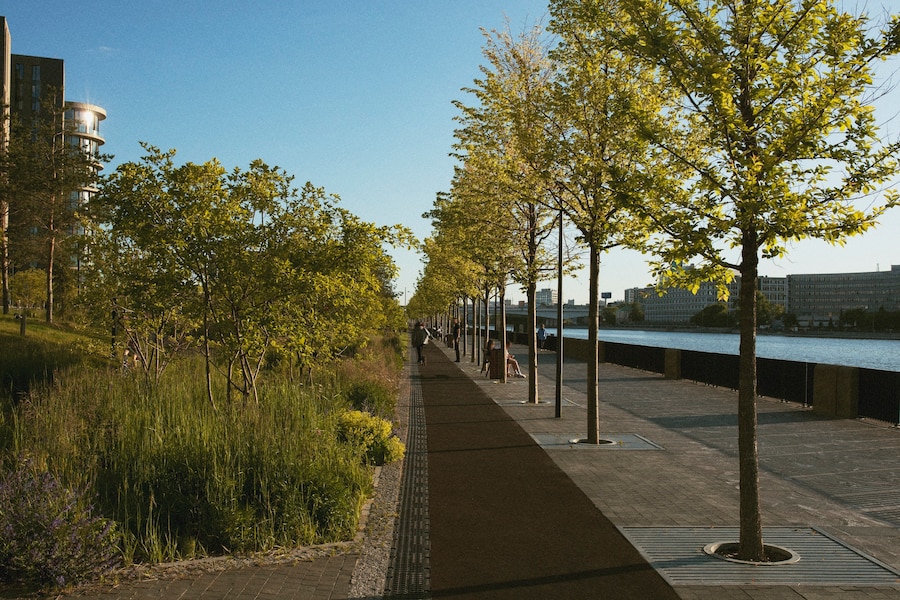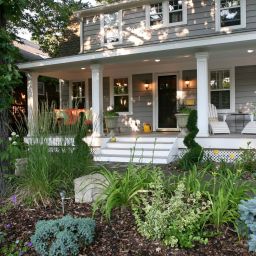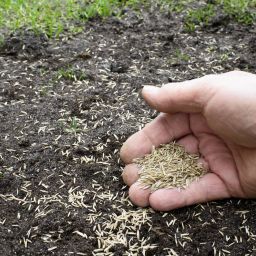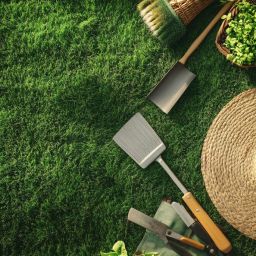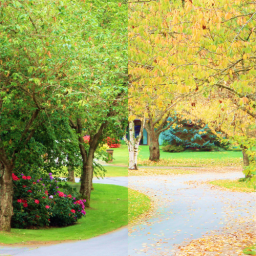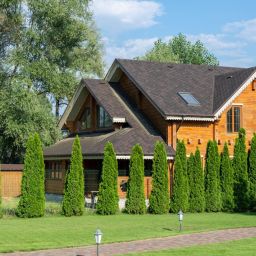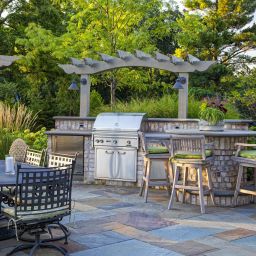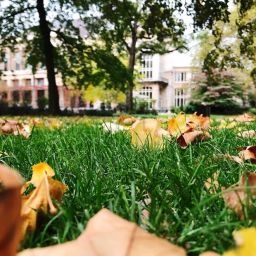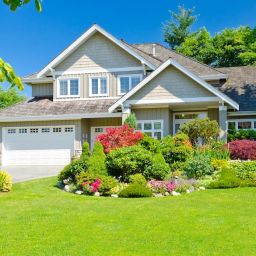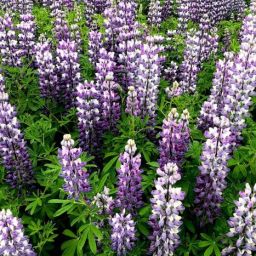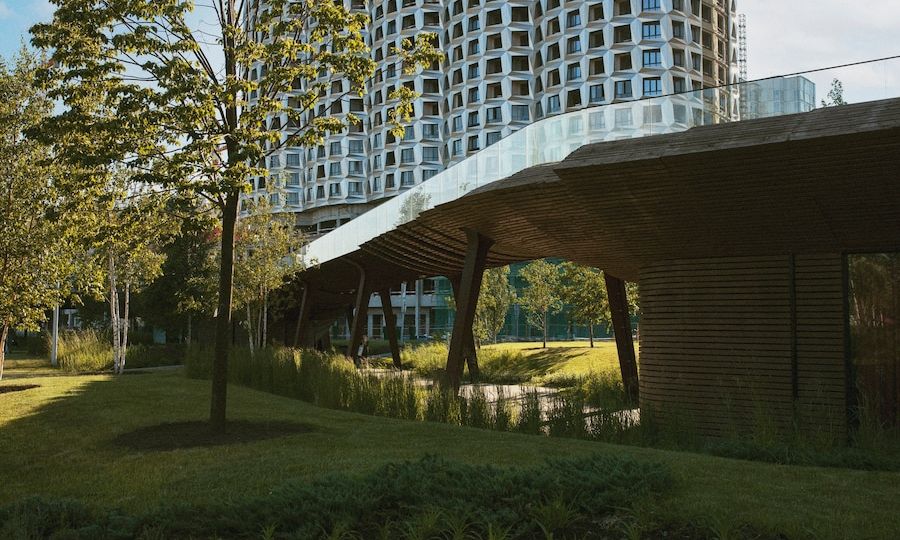
Landscape architecture plays a crucial role in shaping the aesthetic and functional aspects of outdoor spaces, blending art and science to create environments that enhance quality of life. In Nashville, a city renowned for its vibrant culture and rich history, landscape architecture reflects the unique character of the region and its climate. This comprehensive guide explores the essentials of landscape architecture in Nashville, offering insights into design principles, plant selection, and sustainable practices. For professional expertise and tailored solutions, Landscape Nashville provides valuable services to help you create a beautiful and functional landscape. Whether you are a homeowner looking to revamp your garden or a designer seeking inspiration, this guide will help you understand the key elements of landscape architecture.
CONTACT US
History and Evolution of Landscape Architecture in Nashville
The history of landscape architecture in Nashville is deeply intertwined with the city’s development and cultural heritage. From the early days of the 19th century, when the city’s green spaces were designed to reflect the elegance of classical gardens, to the modern era where sustainable practices and innovative designs are at the forefront, Nashville’s landscape architecture has evolved significantly. Historical landmarks such as the Cheekwood Estate and Gardens provide a glimpse into the traditional approaches of landscape design, while contemporary projects reflect a shift towards eco-friendly and community-focused solutions.
The evolution of landscape architecture in Nashville mirrors broader trends in the field, including the incorporation of native plant species, the integration of ecological considerations, and the development of outdoor spaces that foster social interaction. Today, landscape architects in Nashville are tasked with balancing aesthetic beauty with functionality, ensuring that outdoor spaces meet the needs of a diverse and growing population.
Key Principles of Landscape Architecture
Landscape architecture encompasses a range of principles that guide the creation of functional and visually appealing outdoor spaces. Key principles include:
- Functionality: Ensuring that the design meets practical needs, such as providing adequate space for activities and facilitating easy maintenance.
- Aesthetics: Creating visually pleasing environments that enhance the overall appeal of the space and complement the surrounding architecture.
- Sustainability: Incorporating eco-friendly practices that minimize environmental impact and promote long-term health of the landscape.
- Contextual Design: Adapting the design to fit the specific characteristics of the site, including its climate, soil, and cultural context.
By adhering to these principles, landscape architects can create spaces that are both beautiful and functional, enhancing the quality of life for those who use them.
Understanding Nashville’s Unique Climate and Soil
Nashville’s climate and soil conditions play a significant role in landscape design. The city experiences a humid subtropical climate, characterized by hot, humid summers and mild winters. This climate influences the selection of plants and the design of irrigation systems.
The soil in Nashville is generally clay-based, which can affect drainage and plant growth. Understanding these local conditions is crucial for designing landscapes that thrive in the region. Landscape architects must consider factors such as soil amendments, proper plant selection, and effective drainage solutions to ensure the success and longevity of their designs.
Designing for Aesthetic Appeal and Functionality
Designing a landscape involves balancing aesthetic appeal with practical functionality. This means creating spaces that are not only beautiful but also serve their intended purpose. Key considerations include:
- Spatial Layout: Organizing outdoor areas to optimize flow and usability, such as creating designated spaces for relaxation, dining, or play.
- Visual Interest: Incorporating elements like color, texture, and form to create a visually engaging environment.
- Functional Elements: Including features such as seating areas, pathways, and storage solutions to enhance the usability of the space.
By integrating these elements thoughtfully, landscape architects can create environments that are both visually pleasing and practical for everyday use.
Choosing the Right Plants for Nashville Landscapes
Selecting the right plants for Nashville landscapes is essential for creating a thriving and low-maintenance garden. The city’s climate and soil conditions influence the types of plants that will succeed in the area.
Native plants, which are adapted to local conditions, are often a good choice as they require less water and maintenance. Examples include coneflowers, black-eyed Susans, and ornamental grasses. Additionally, understanding the growth habits and seasonal needs of plants ensures that they will thrive throughout the year and complement the overall design.
Incorporating Water Features and Irrigation Systems
Water features and irrigation systems are important components of landscape design, enhancing both aesthetic appeal and functionality. Water features, such as fountains, ponds, and waterfalls, can create a sense of tranquility and attract wildlife.
Irrigation systems, including drip irrigation and sprinkler systems, help ensure that plants receive adequate water while conserving resources. Proper design and installation of these systems are crucial for maintaining a healthy and sustainable landscape.
Sustainable and Eco-Friendly Landscape Practices
Sustainability is a key consideration in modern landscape architecture, with a focus on reducing environmental impact and promoting ecological health. Eco-friendly practices include:
- Using Native Plants: Reducing the need for chemical fertilizers and pesticides.
- Implementing Rain Gardens: Capturing and filtering stormwater runoff.
- Choosing Sustainable Materials: Opting for materials with low environmental impact.
By adopting these practices, landscape architects can create landscapes that are both beautiful and environmentally responsible.
Hardscaping Elements: Patios, Walkways, and Walls
Hardscaping elements, such as patios, walkways, and walls, provide structure and functionality to outdoor spaces. These features not only enhance the aesthetic appeal but also contribute to the usability of the landscape.
Patios offer spaces for outdoor dining and relaxation, while walkways guide visitors through the garden. Retaining walls and decorative walls can define areas and provide support for plants. Selecting durable materials and thoughtful design are key to ensuring that these elements complement the overall landscape and withstand the test of time.
Outdoor Living Spaces: Decks, Pergolas, and Fire Pits
Outdoor living spaces, including decks, pergolas, and fire pits, extend the usability of the landscape and enhance the enjoyment of outdoor environments. Decks provide elevated platforms for entertaining, while pergolas offer shaded areas for relaxation. Fire pits create a focal point for gatherings and provide warmth on cooler evenings.
Incorporating these features into the landscape design can transform outdoor areas into functional and inviting spaces that encourage social interaction and enjoyment.
Lighting Design for Safety and Ambiance
Lighting design is essential for creating safe and inviting outdoor spaces. Proper lighting ensures that pathways, steps, and other features are well-lit to prevent accidents.
In addition to safety, lighting can enhance the ambiance of the landscape, highlighting key elements and creating a desired atmosphere. Considerations include the use of LED lights for energy efficiency, placement of lights to achieve desired effects, and integration with landscape features to create a cohesive design.
Maintenance Tips for Nashville Landscapes
Regular maintenance is crucial for keeping Nashville landscapes healthy and attractive. Key maintenance tasks include:
- Pruning and Trimming: Ensuring plants are kept in good shape and removing dead or diseased growth.
- Weeding and Mulching: Preventing weeds from competing with plants and maintaining soil moisture.
- Monitoring for Pests: Identifying and managing pest issues to protect plant health.
By following these maintenance tips, homeowners can keep their landscapes looking their best and ensure long-term success.
Budgeting and Cost Considerations
Budgeting is an important aspect of landscape design, as it helps manage costs and ensure that the project stays within financial limits. Key cost considerations include:
- Design and Installation: Fees for professional services and labor.
- Materials and Plants: Costs for materials, plants, and hardscaping elements.
- Ongoing Maintenance: Expenses for routine upkeep and care.
By carefully planning and budgeting, individuals can achieve their desired landscape design while managing costs effectively.
Creating Your Ideal Nashville Landscape
Designing a landscape in Nashville involves understanding the unique characteristics of the region, including its climate, soil, and cultural context. By incorporating key principles of landscape architecture, selecting appropriate plants, and integrating functional and aesthetic elements, you can create a beautiful and sustainable outdoor space. If you’re ready to transform your outdoor area into your ideal landscape, contact us today.
FAQ’s
What is landscape architecture, and how does it differ from landscaping? Landscape architecture is the art and science of designing outdoor spaces, focusing on functionality, aesthetics, and environmental impact. It goes beyond landscaping by considering the broader context of the property and its surroundings.
Why is landscape architecture important for Nashville properties? Nashville’s unique climate and diverse terrain offer opportunities for creating stunning outdoor spaces. Landscape architecture enhances property value, creates functional and beautiful outdoor living areas, and promotes environmental sustainability.
How do I choose a landscape architect in Nashville? Research local landscape architects, review portfolios, and read client testimonials. Consider their experience, design style, and ability to align with your vision for your Nashville property.
What factors should I consider when planning a landscape design in Nashville? Factors such as property size, soil conditions, sunlight exposure, privacy needs, and desired outdoor activities should be considered when planning a landscape design in Nashville.
How can I incorporate native plants into my Nashville landscape? Native plants are well-suited to the Nashville climate and require less maintenance. They support local ecosystems and create a sustainable landscape.
What are the benefits of sustainable landscaping in Nashville? Sustainable landscaping practices in Nashville conserve water, reduce pollution, and create habitats for wildlife. It also promotes energy efficiency and improves air quality.
How can I create an outdoor living space in my Nashville backyard? An outdoor living space in Nashville can be achieved by incorporating elements like patios, decks, outdoor kitchens, fire pits, and comfortable seating areas. Consider the Nashville climate when selecting materials and design elements.
How do I maintain a landscape design in the Nashville climate? Proper maintenance is essential for preserving the beauty of your Nashville landscape. Regular watering, pruning, fertilizing, and weed control are key to keeping your outdoor space thriving.
What is the role of hardscaping in Nashville landscape design? Hardscaping elements like patios, walkways, and retaining walls provide structure and functionality to your Nashville landscape. They complement softscape elements like plants and water features.
How can I incorporate water features into my Nashville landscape design? Water features add a soothing element to your Nashville landscape. Consider options like ponds, fountains, or waterfalls to enhance the overall ambiance and create a focal point.

